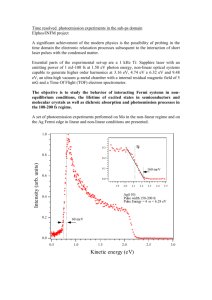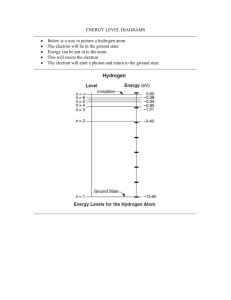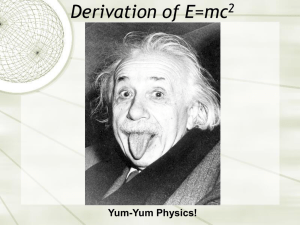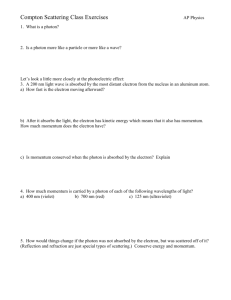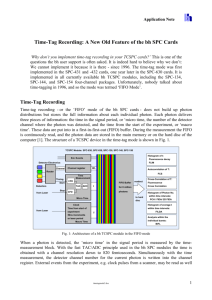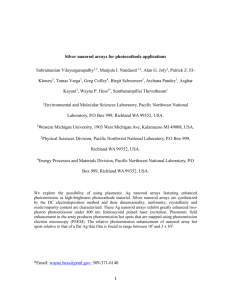aM9
advertisement
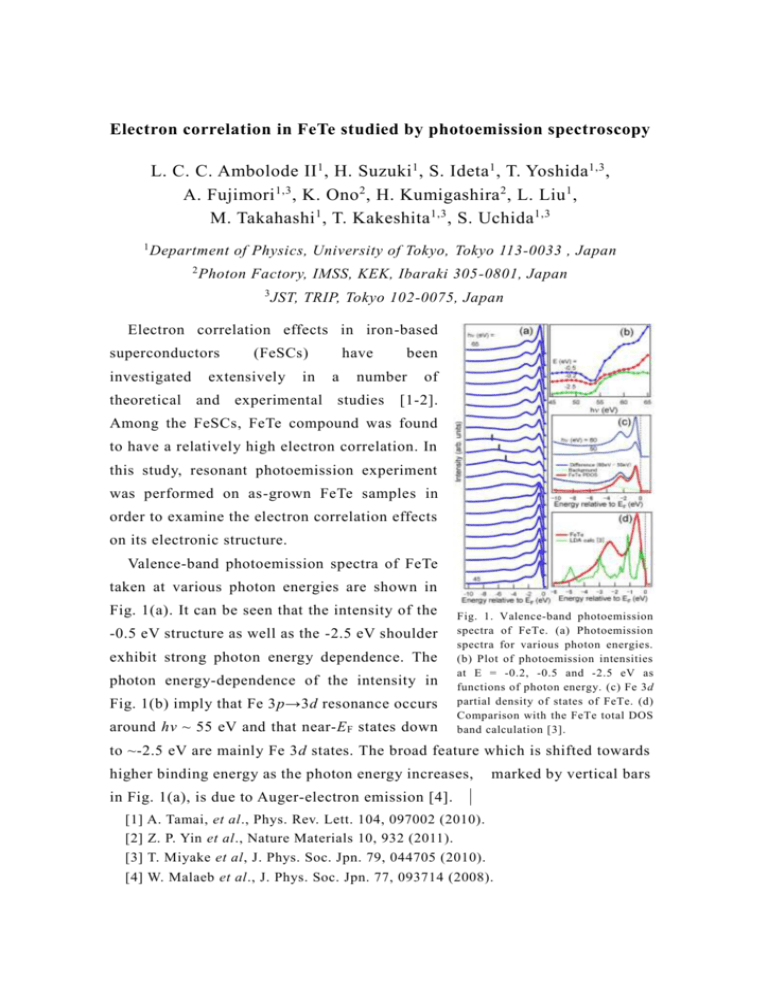
Electron correlation in FeTe studied by photoemission spectroscopy L. C. C. Ambolode II 1 , H. Suzuki 1 , S. Ideta 1 , T. Yoshida1,3 , A. Fujimori 1,3 , K. Ono 2 , H. Kumigashira 2 , L. Liu 1 , M. Takahashi 1 , T. Kakeshita 1,3 , S. Uchida 1,3 1 Department of Physics, University of Tokyo, Tokyo 113-0033 , Japan 2 Photon Factory, IMSS, KEK, Ibaraki 305-0801, Japan 3 JST, TRIP, Tokyo 102-0075, Japan Electron correlation effects in iron-based superconductors investigated (FeSCs) extensively in have a been number theoretical and experimental studies of [1-2]. Among the FeSCs, FeTe compound was found to have a relatively high electron correlation. In this study, resonant photoemission experiment was performed on as-grown FeTe samples in order to examine the electron correlation effects on its electronic structure. Valence-band photoemission spectra of FeTe taken at various photon energies are shown in Fig. 1(a). It can be seen that the intensity of the -0.5 eV structure as well as the -2.5 eV shoulder exhibit strong photon energy dependence. The photon energy-dependence of the intensity in Fig. 1(b) imply that Fe 3p→3d resonance occurs around hv ~ 55 eV and that near-E F states down Fig. 1. Valence-band photoemission spectra of FeTe. (a) Photoemission spectra for various photon energies. (b) Plot of photoemission intensities at E = -0.2, -0.5 and -2.5 eV as functions of photon energy. (c) Fe 3d partial density of states of FeTe. (d) Comparison with the FeTe total DOS band calculation [3]. to ~-2.5 eV are mainly Fe 3d states. The broad feature which is shifted towards higher binding energy as the photon energy increases, marked by vertical bars in Fig. 1(a), is due to Auger-electron emission [4]. [1] A. Tamai, et al., Phys. Rev. Lett. 104, 097002 (2010). [2] Z. P. Yin et al., Nature Materials 10, 932 (2011). [3] T. Miyake et al, J. Phys. Soc. Jpn. 79, 044705 (2010). [4] W. Malaeb et al., J. Phys. Soc. Jpn. 77, 093714 (2008).
